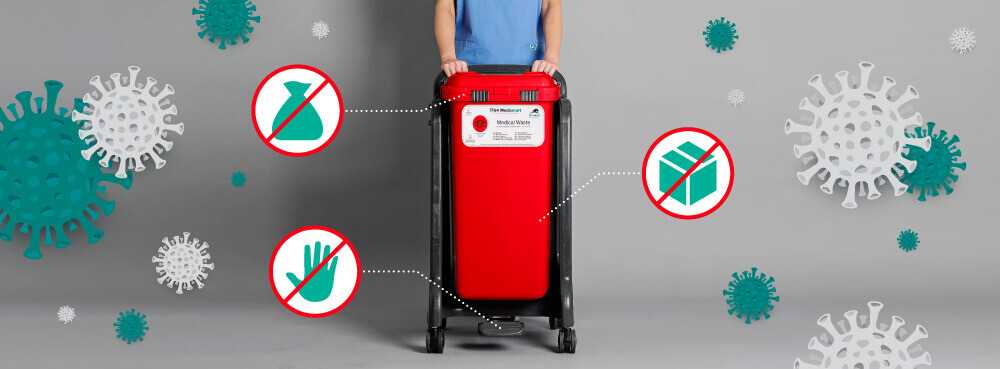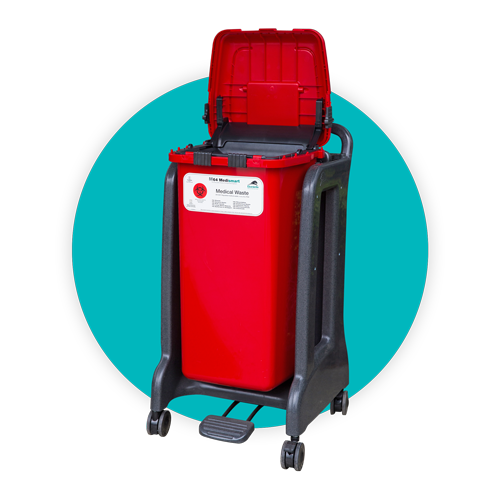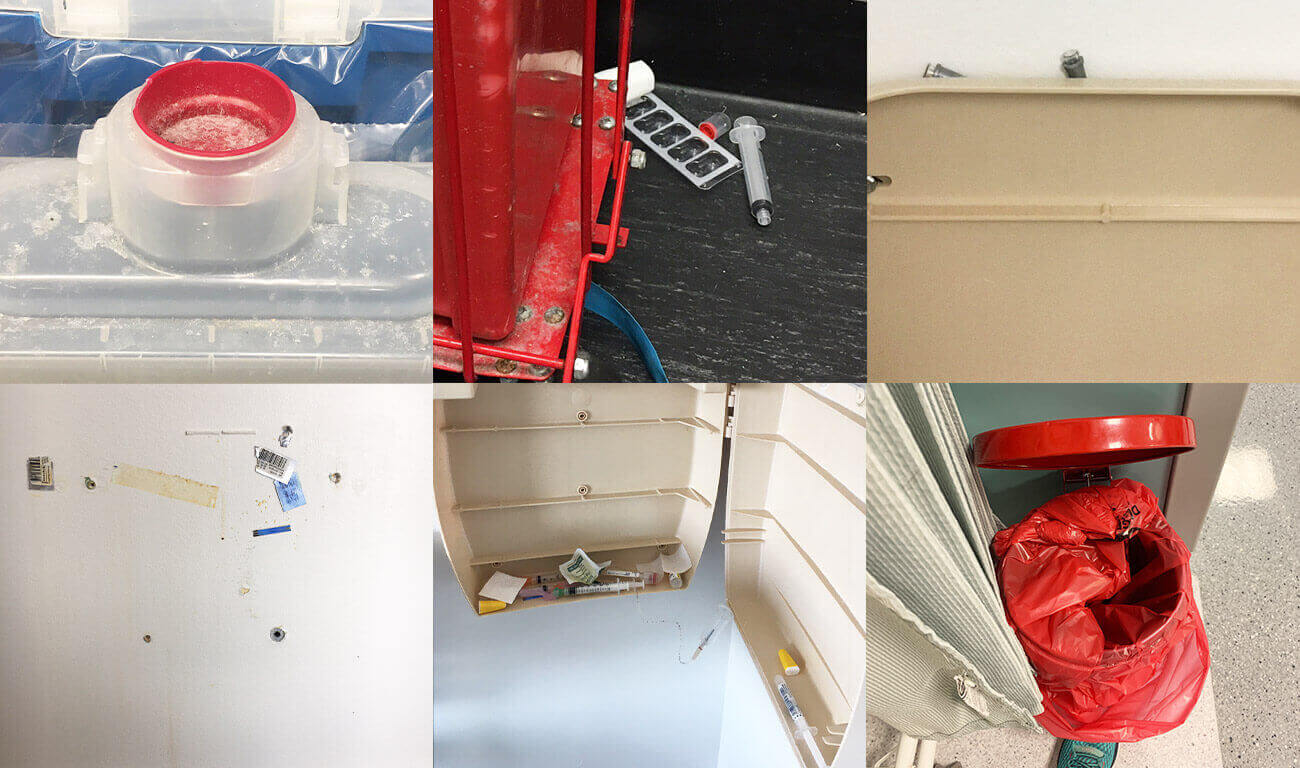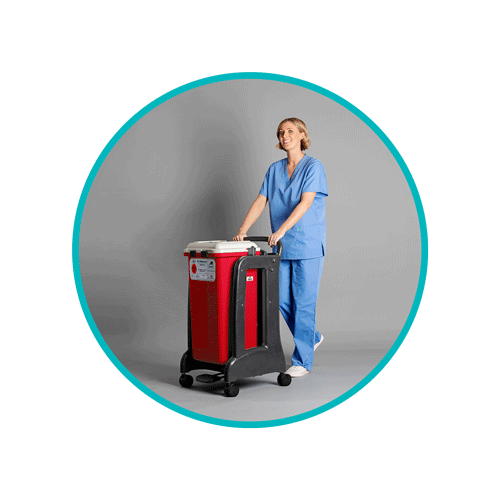The Impact of Healthcare Waste Management on Infection Control

REVISION : Last updated 13th June 2023
The world is getting serious about infection control.
Modern healthcare has not experienced anything like what is currently occurring around the world. The global COVID-19 pandemic radically changed life as we know it; but arguably, the most notable change in the years that have followed has been the communal light shone on importance of infection prevention.
Habits that were once confined to within the four walls of a hospital to control the spread of infection, have now been rapidly adopted across the planet. From bustling metropolises to rural towns, public transport to commercial airlines, grocery store giants to local farmers markets, the collective attitudes around infection control have dramatically shifted. In just a few short months, what has emerged is a newfound consciousness and focus around hand hygiene, slowing the spread of infection, and advocation of social distancing. This is a worldwide unity, with a focus on healthcare, that unity that hasn’t been seen since the Spanish Flu of 1918. Everyone, from all corners of the globe, have put their full political and social force into supporting the frontlines of healthcare.
Over the course of the pandemic, Daniels Health was approached by hospitals, governments, and other types of healthcare facilities (spanning across the United States, Canada, and the United Kingdom) in need of waste containment solutions that put safety first. Our organization was ready for this as our services and containment solutions are designed to eliminate the risk of surface infection transfer when handling waste – granting us the ability to easily deliver heightened protection for frontline staff handling COVID-19 waste.
The Impact of Medical Waste Management on Hospital Hygiene
Daniels Health was founded on a vision that radically reimagined cleanliness, safety and hygiene standards in medical waste management. Here are the healthcare waste management challenges we identified 30 years ago, which, sadly, are still prevalent in hospitals and healthcare facilities today:
- Lack of safe-disposal design in sharps containers exposes patients and clinical staff to sharps exposure risk
- Medical waste trolleys and carts that are wheeled from the loading dock through clinical areas trailing contaminants through high-focus infection control areas
- Reusable medical waste bins and trolleys that remain uncleaned for sometimes years at a time with permanent staining of blood and fluid spills
- Wall casings for sharps containers that are never cleaned and often have a build-up of mis-disposed sharps, dirt and grime behind them, as well as loose sharps within the cabinets that pose a risk to clinical or EVS staff
- Small open-top “kick-bucket” medical waste bins beside patient beds that are susceptible to curtain overhang cross-contamination
- Full-touch medical waste containers that have no hands-free mechanism to act as a physical barrier to contamination risk
- Disposable hazardous waste containers being wiped down after use and reused as “clean” containers in hospital facilities without proper decontamination protocols and processes
- Cardboard boxes and red bags being used for containment of medical waste with manual assembly and hand-tying, exposing healthcare workers to puncture, spillage and cross-contamination risk
- Reusable chemotherapy and pharmaceutical waste containers with porous surfaces that do not undergo a thorough disinfection or microbial kill robotic washing process
- Poor segregation practices which see clinical and downstream staff being exposed to high risk wastes incorrectly disposed of in general trash or red bags
None of the above illustrate modern cleanliness and sanitation – especially within our leading medical institutions. Where patients are housed and being treated, infection control and attention to every microbial detail is a must! Our generation is more aware than every of the risks that come from poor hygiene and the vulnerabilities of disease transmission. We have to get more serious about safety and infection control in patient-care facilities at every level – it will save lives.
Intensive Care Units | Where cleanliness matters
The ICU or NICU of a hospital often represents the apex of hospital hygiene standards. For example, before entering the unit, nursing staff are expected to undergo a precise and rigorous hand-hygiene routine – sleeves must be rolled up, exposing bare arms, as the clean in/clean out procedure necessary for every patient interaction is completed. In many ICU units, the safety measures continue with the prohibition of jewelry and other foreign objects that could harbor contaminates. Cell phones even garner special attention with mandatory disinfection upon entering the ward! With such extensive staff protocols in place, it would be a natural assumption that all aspects of the ICU environment received the same heightened focus on safety. However, all too often, one aspect is overlooked – the medical waste bins.
With your patient rooms scrupulously clean, have you looked at the cleanliness standard of your RMW bin?
In a hospital’s Intensive Care Unit, the department dedicated to the care of highly vulnerable patients, we have seen some of the worst offenders of medical waste malpractice. We say that without judgement as we know that often times the clinicians are entirely focused on patients and EVS are focused on removing the of red bag waste from the patient environment. Unfortunately, the focus doesn’t always extend to the bin sitting in the corner or cleaning and decontaminating the bin after waste has been removed. And even more regrettably, the average healthcare waste management company just provides a bin and that’s about it.
“This is the reality of intensive care: at any point, we are as apt to harm as we are to heal.”
* This small selection of photos taken in an ICU illustrates the above points; as a generation of healthcare professionals, we need to evolve our thinking of safety and cleanliness in healthcare environments:

A waste management model that begins with Infection Control
Daniels Health’s approach to hospital waste management not only leads with safety, infection control and risk management, but delivers a commitment to service and clinical outcomes that transcends well beyond the point of delivering medical waste bins to a hospital dock. Here’s a glimpse of how Daniels Health has created a new normal in medical waste handling:
- Containers designed with high gloss non-porous surfaces that can be and are easily cleaned
- Containers supplied as a single sealed unit (no nesting), eliminating moisture residue that enables microbial growth
- Once full EVERY container goes through a robotic washing process that achieves a 106 log bacterial kill in decontamination and sanitization
- Daniels robotic washing process has been independently verified as achieving a level of sanitization 4 x higher than required by the CDC
- Purpose-designed carts and floorstands enable hands-free disposal of waste without surface-touch or any manual handling
- No cabinets on walls! Our sharps and pharmaceutical waste containers are designed as single units, leaving no residual containment to harbor dirt, dust or pathogens.
- Medical waste containers proven to achieve 13 times less microbial contamination than its counterparts
- Sharps, medical waste, pharmaceutical and chemotherapy waste containers are designed to never touch the ground once filled. Specialist carts, mounts and transporter units keep containers suspended to eliminate cross-contamination
- Our clinically-educated rollout team ensure container positioning and mounting heights meet the unique safety needs of each facility and site location we install
- We work within the four walls of your facility to drive continued safety, efficiency optimization and segregation effectiveness, protecting your staff and ours
It’s not just our process that is tried-and-tested, both our products and our methodologies have been scientifically validated in peer reviewed studies.
One particular study showed the impact of conversion to Daniels reusable Medismart bins after contamination of medical waste bins in a pharmacy clean room resulted in 753 patients being infected with meningitis, causing 64 deaths in 20 states. This is one area of a hospital where contamination risk should not be taken lightly. The goal of an ATP test in this scenario was to reduce the ATP count to a target-level of <250 relative light units; the test failed with the average of the highest count being 14,844 – exceeding safe levels. After implementation of the Medismart container, there were no further failure.
 Safety and Care is essential not only for patients, but for healthcare staff
Safety and Care is essential not only for patients, but for healthcare staff
The COVID-19 pandemic shone a much needed spotlight on the critical role healthcare practitioners play in supporting our communities; and, in the same vein, it also revealed insufficiencies in the safety and support we give back to our frontline healthcare workers. Daniels was established with the sole vision of protecting healthcare workers; our containers have been designed by clinicians for clinicians, our education and training is developed in partnership with infection control experts, and we are the only medical waste company in the world to have clinically published peer review papers documenting the clinical, cleanliness and environmental outcomes of our unique process.
We’re passionate about making healthcare safer, join us in protecting healthcare workers by bringing an infection control based approach to healthcare waste management.
Let's Talk!
Your time is valuable, and we don’t want to play hard to get. You can either phone us directly on the details listed on our contact page, or feel free to fill out this short form and one of our team members will get back to you as quickly as possible.
